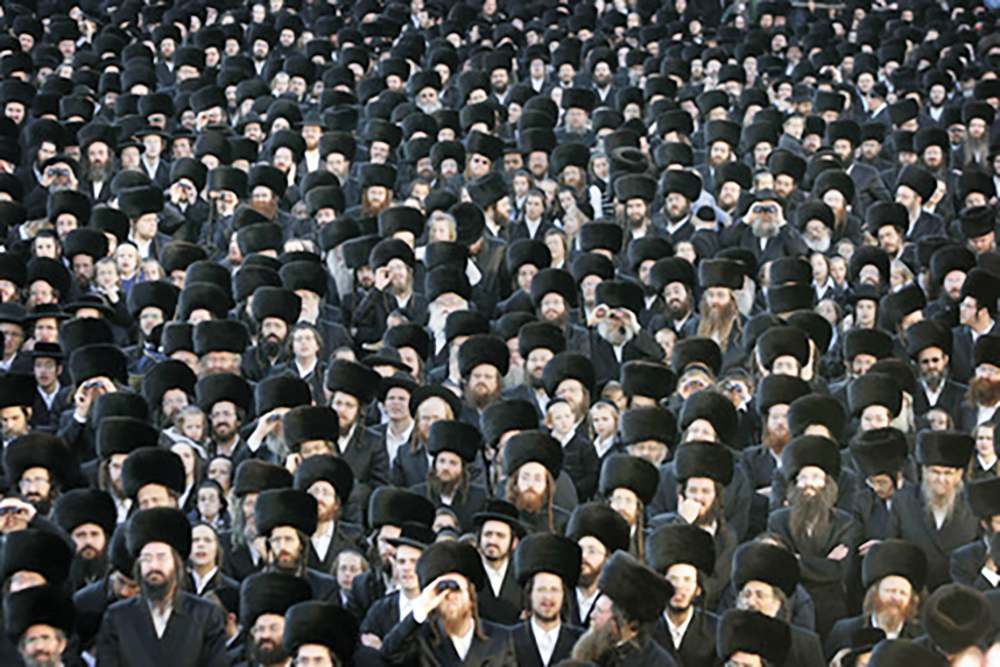
Leaders are only fully appreciated once they retire and Moshe—our greatest leader—was no different. Once it was announced that he would not direct us into Eretz Yisroel, it became apparent that replacing him would be a daunting task. Who could possibly fill his giant sandals?
Heroically, Moshe’s first thoughts—upon receiving his harsh sentence—turned to his succession. Before considering his own legacy or lamenting his harsh and tragic fate, he petitions Hashem to select a new leader with requisite leadership traits. It is a touching scene of undying devotion and selflessness.
When describing his potential successor, Moshe refers to Hashem as “Elokei Haruchot” or the “God of all human lives,” a rare term which appears only twice in the entire Torah. Rashi comments that this phrase alludes to Hashem’s capacity to craft us with diverse personalities and different character traits. Even though our DNA is almost completely identical, Hashem endowed each of us with individual identity, diverse features and differing viewpoints, interests and ideas. Only the “God of all lives” can produce such broad diversity within one species which we call “homo sapiens.”
By referring to Hashem in this manner, Moshe affirms that leaders must cultivate diversity, rather than stifle personality differences or homogenize their community. Throughout his own career, Moshe had demonstrated uncanny range as a leader. He had scaled the heavens and split the seas. He had defied a brutal tyrant and brought a superpower to its knees. Yet, he also understood the dark side of humanity and he appreciated the frailty of the human condition. Embracing a nation of fallen sinners after the egel debacle, he had valiantly davened for their restoration and actively-assisted in their teshuva.
Moshe, personally, knew how critical it is for a leader to appreciate individual differences while promoting diversity, and he pleaded with Hashem for a replacement with similar sweep and with the same leadership vision.
Personalized religious experience will always yield a deeper and more authentic religious identity; whereas extreme religious conformity suppresses individual expression and can degenerate into rote ritual performance and unexamined religious experience. By individualizing religious experience, it can become more passionate and more genuine.
Religious Conformity
Yet, despite the value of personal expression, religion demands broad-scale conformity. We are expected to submit to Hashem’s universal mitzvot which does not discriminate between individuals. Beyond common mitzvot, religion also demands suppressing our personal opinions and beliefs to abide by predetermined articles of faith and emunah.
Religious life lies at the very delicate intersection between individualism and traditionalism. We are expected to carefully calibrate between independent thought and conventionalism. Too much conformity and religious experience feels plastic. Too much unrestrained self-expression and we turn away from Hashem and from our sacred mesorah.
Tilting Toward Conformity
Over the past 2,000 years, several events pressured us into greater religious conformity. Halacha always allowed for a relative degree of diverse practice. In theory, halacha is somewhat “elastic,” as it acknowledges multiple truths—provided they cohere with original texts and earlier interpretations. The Talmud itself is predicated upon machloket, with the implicit assumption of multiple truths.
The harsh reality of galus though, changed the equation. Scattered across distant lands without common geography, statehood or nationality, our communal integrity depended entirely upon common religious practices and a unified culture. As we faced constant expulsions and forced relocations, halachic diversity became less manageable. Common halachic practice remained the one “constant” in Jewish communal life and the more homogenous, the easier it was to maintain communal stability within the chaos of Medieval Europe.
Under the stress of exile, religious practice, understandably, tilted toward greater conformism. Especially in Western Europe—which viciously persecuted Jews and consistently expelled them—unflinching loyalty to minhag and customs, let alone actual halacha became unconditional. Conformity was the only glue which could bind us into common communities. For the glue to be effective, it must possess a high degree of viscosity. Conformity provided that viscosity.
A Standard System
This phenomenon came to a head in the 16th century, in the aftermath of the Spanish inquisition. Waves of wealthy and highly educated Spanish Jews emigrated across the Jewish world—bringing with them their respected and influential traditions—often clashing with the local traditions of both Western European and Arabic Jewish communities. This demographic tumult destabilized halachic practice and opened serious communal fissures. Something had to be done.
In response, Rav Yosef Karo—himself a refugee from Spain who resettled in Tzfat—revolutionized halacha by authoring the Shulchan Aruch, offering a standard system of halachic decision making. Pesak halacha would no longer be based upon the individual interpretation of a particular local rav, but would now be universalized into one common system and one standardized approach. Though some of his contemporaries disagreed with the basic concept of standardizing religious practice, history ruled in his favor, and his approach and his work became the gold standard for Jews across the world. The adversity of Jewish exile had compelled us to greater conformity. All halachic rulings would now be centralized and streamed through Rav Yosef Karo’s system and his Shulchan Aruch.
Cultural Insularity
Ironically, 300 years later, an opposite force would propel us—once again—toward greater conformity. During the medieval period, antisemitism and expulsions had destabilized the Jewish world, promoting greater halachic conformity. Beginning in the 19th century, Jewish emancipation—which is contradictory to antisemitism—removed many of the barriers which had traditionally prevented Jews from entering mainstream society. However, as the modern world was quickly turning secular and even disdainful of religion, this invitation to rejoin society threatened our religion and culture.
Some breakaway groups of Judaism altered their halachic practice to better reflect social expectations and broader cultural norms. Orthodox Jewry however, remained unwavering in its commitment to classic halachic behavior. To protect itself against cultural encroachment, Orthodox society at large became more insular, and—by extension—more conformist.
Charedi and Chasidic Culture
In some respects, the highly-coded Charedi culture is a response to the perceived threats of a religiously hostile modern world. Even more revealing is the extreme insularity and conformism of the modern Chasidic world. This movement—launched in the early 18th century—originally envisioned a community which would embrace a broader range of Jews. Successive waves of modern secularization, however, and the horrors of the Holocaust which disproportionately victimized the Chasidic world—turned this society inward—into self-preservationist mode. Chasidic societies have become extremely insular with highly coded dress, behavior and thought. This insularity is a vivid example of the impact of a secular modern world upon Jewish conformity and insularity.
Returning Home
Now that we are regathering in our common homeland and our national Jewish identity is more native, many Orthodox Israelis are experimenting by exploring a more personalized religious experience. Confident in their Jewish identity, they are examining new horizons of religious expression hoping to craft a more authentic religious identity. It is interesting to consider what direction the Orthodox Jewish world will take in the next few generations. Will the conformism of the past 500 years—which has become so popular—continue? Or, will there be a shift back to a more diverse approach to religious identity and experience, hopefully, all within the confines of halachic fidelity and Orthodox commitment? No one knows where this is all heading.
The writer is a rabbi at Yeshivat Har Etzion/Gush, a hesder yeshiva. He has semicha and a BA in computer science from Yeshiva University as well as a masters degree in English literature from the City University of New York.










